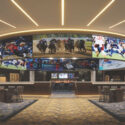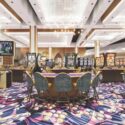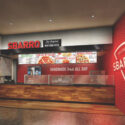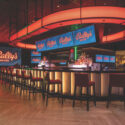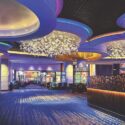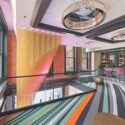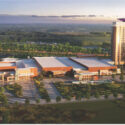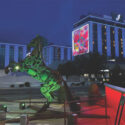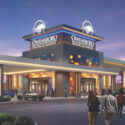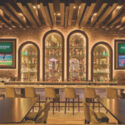
When casinos around the world closed for at least four months—some still are not open—the closure impacts went far beyond the walls of the casinos. The suppliers to the casinos—slot machines, table games, technology systems, furniture, food and beverage and a thousand other items previously unknown—were shut down as well. Employees were furloughed. Transportation stopped. The world came to a grinding halt. It is, after all, 2020.
But one of the bright spots in an otherwise dreary situation was that it gave companies time to think about solutions. Yes, solutions to the Covid crisis for sure, but solutions to the long-term issues that gaming and casinos will surely face, with or without Covid.
One of those disciplines that responded positively was the design side. I’ve done a dozen or so podcasts and interviews with architects, designers, construction personnel and others involved in the design, renovation and construction of casinos, and the upbeat view on the industry and the shape of casinos over the next decade was uplifting.
Even before Covid, the casino floor was changing. The rows upon rows of slot machines were slowly disappearing (except perhaps for Encore Boston Harbor and its 4,000 games). There was repurposing of former casino floor space to sportsbooks, food halls or lounges. Machines were more likely to be clustered in four-piece carousels with lots of elbow room. Hotel lobbies were more elegant and comfortable. It was a change that was slowly developing long before Covid.
But when the pandemic hit and everything closed, seemingly overnight, that’s when the real change began to occur. Social distancing became a thing. The cleaning crew was suddenly the most important department. Virtual work became the norm—unless you dealt cards or attended slots for a living.
And that’s when the innovators shifted into high gear. Plexiglas became a commodity. Every other slot machine was put to sleep. Masks became a fashion statement.
We knew this pandemic won’t last forever. But what happens when we return? Will there be some residual social distancing? Will people continue to wear masks even though the danger has passed? Can we just pick up where we left off?
No, the smart people understand that the impacts of the pandemic will last far into the future. Will entertainment and sports events ever be the same? Let’s set some parameters in seating groups. Will nightclubs ever open again? Let’s repurpose that space for a cool pool experience. How about meetings and conventions? The larger your meeting space the more success you’ll have attracting trade shows and conferences.
I’ll be interested to see designs that come out post-Covid. Paul Steelman, who designed Derek Stevens’ Circa, told me that the design process was long done before the pandemic hit, so even though Circa opened in October in the later stages, it wasn’t truly influenced.
However, Nick Schoenfeldt from TBE said it did change the way they designed Fort McDowell’s impressive expansion, even though it happened after the fact. He said the slots were spread out more and poker was eliminated. The buffet has been substantially changed and hooked into an ordering technology that wasn’t initially considered.
Buffet changes have already been tried at Wynn Las Vegas and it failed. Casino executives didn’t really like buffets to begin with because they are loss leaders, so now they have the opportunity to reimagine the all-you-can-eat concept.
So there will be lots of changes in design for casinos of the future. While it’s still unclear what those changes will consist of, they are coming without a doubt. So don’t miss Casino Style 2021 where we’ll hopefully have more direction of the casino of the future.



